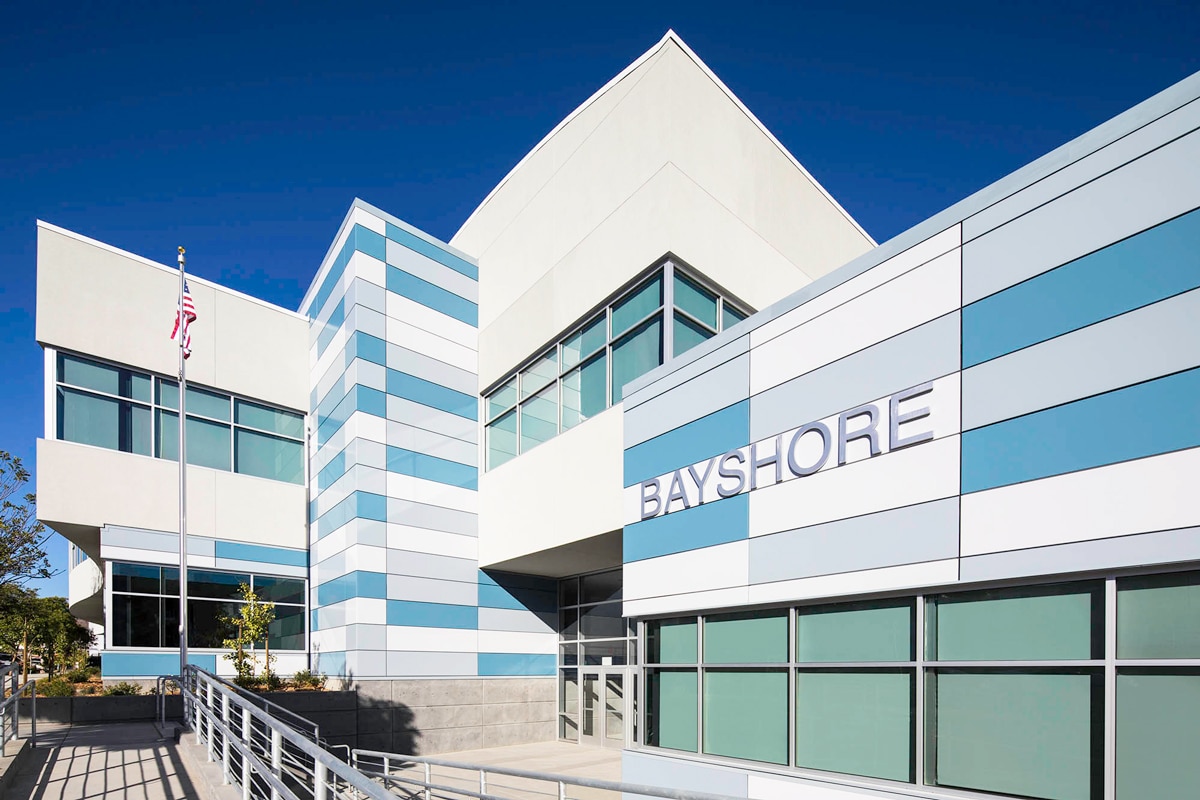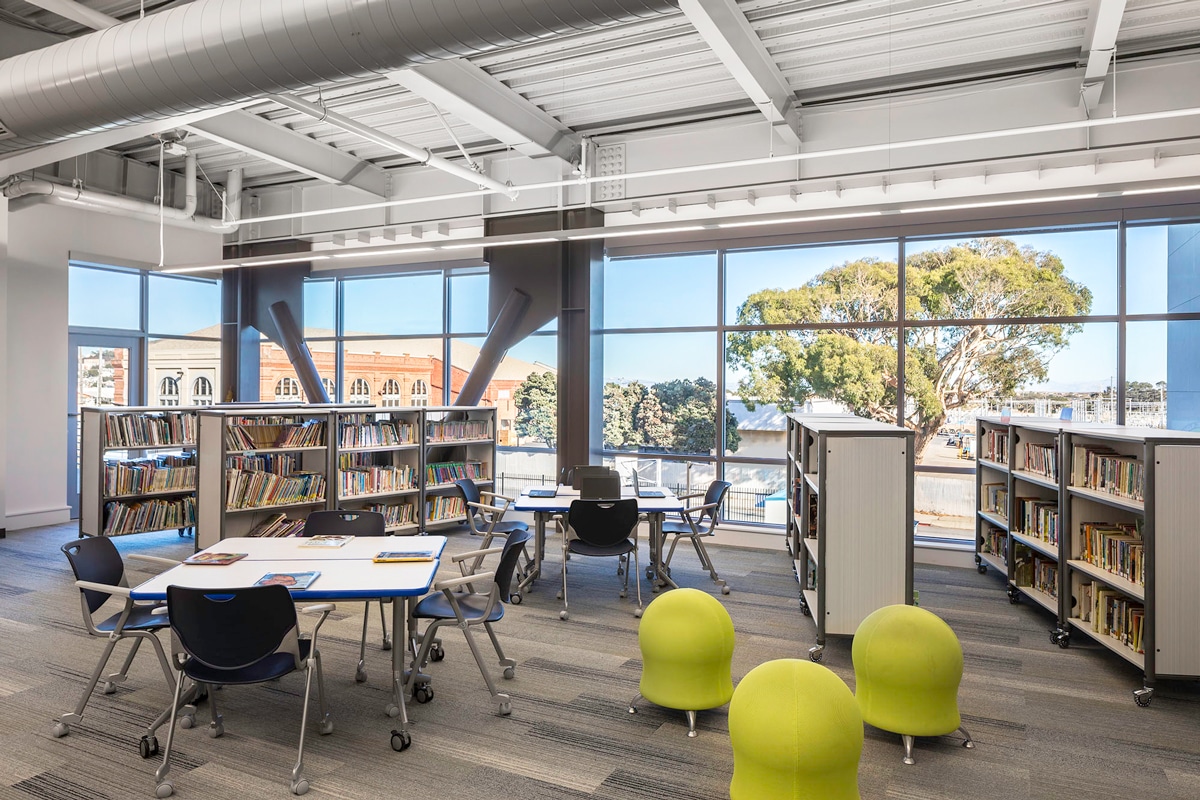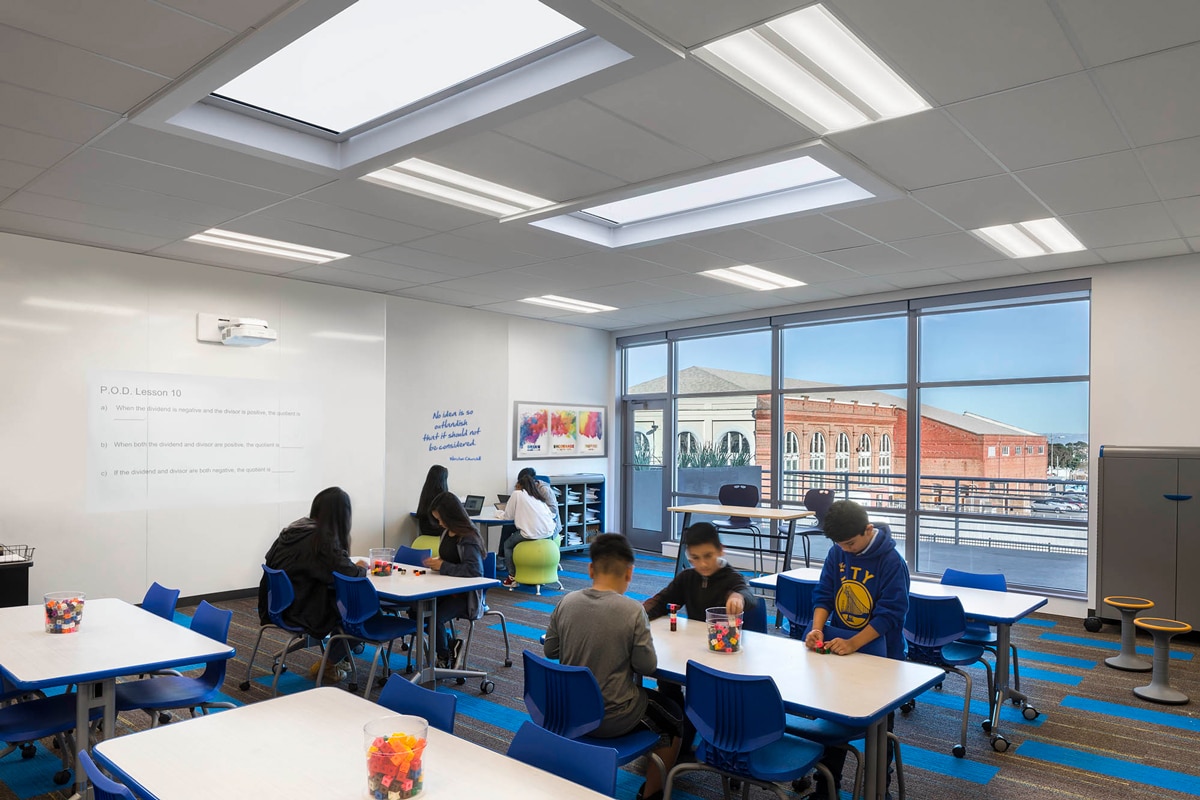Lessons learned along with advancements in technology have helped Studio W Architects boost school security without compromising the academic aura.

[Photo: Chip Allen Photography]
Whether a classroom’s doors lock from the inside or outside makes all the difference during an active threat. “The ‘Columbine lock’ is a common term that refers to locking mechanisms that allow you to lock them from inside [the classroom] without going outside into harm’s way. It was the leading technology up until recently,” says Brian Whitmore, chief executive officer and president of Studio W Architects, formerly BCA Architects. The informal moniker references the tragic 1999 school shooting in Colorado, where classroom doors that could only be locked from the hallway put students and teachers in even more danger.
With more than 90% of the California-based architecture firm’s projects in the education sector, Studio W Architects is modernizing what security looks like for academic buildings. Whitmore says designing for schools is as much about protecting students and teachers as it is advancing the educational environment. “We treat designs for school security with somewhat of a crime scene investigation mindset,” he says. “There have been many lessons learned from other acts of violence on school sites in the past that have enabled us to design better and learn from those mistakes.”
FROM OUR JAN+FEB 2019 ISSUE
The preferred publication of leading green professionals.

Studio W Architects designed Bayshore Elementary School with curb appeal and top security features. Photo by Chip Allen Photography
The Prototype
Audra Pittman, superintendent of Bayshore Elementary School District in Daly City, California, knows the anxiety of running a school with retrofitted security elements.
In 2014, after teaming up with Studio W Architects and Landmark Construction, Pittman went out for the first bond to update the outdated campuses. At the time, the school district functioned as two schools separated by a hill and a 10-minute walk. One school taught kindergarten through fifth grade and the other sixth through eighth grades. Pittman notes buzzers at the entrance of both schools and a camera at one as the only security measures. The schools were decades-old brick buildings with no gyms, no parking lots, and play yards made of concrete.
The bond passed with more than 80% approval rating and qualified for $6 million, which Pittman says wasn’t going to cover priority one upgrades in the master plan for both sites. That’s when Studio W Architects suggested combining the schools into a single K-8 learning environment to cut costs. The firm supported Pittman through the entitlement process with the City of Daly City, rezoning the middle school site to 71 single-family homes. This eliminated a risk for potential developers and led to a $24.5 million sale—the highest market value for the property.
Bayshore Elementary School District was able to leverage the sale with the initial bond, and a second bond for $7 million that later passed, creating enough funding for the $30 million campus. The new TK-8 school was open by September 2017. Currently, 378 students are enrolled, with the introduction of half-day preschool adding 32 more young pupils, in the school with a capacity to hold 600 students. “It’s unheard of for a school district our size to build a facility like this,” says Pittman. “It’s unheard of to do a demolition and a build and have your doors open in 15 months.”
School-Friendly Security
Bayshore Elementary School is now in its second year at the new school building. The building’s exterior includes waves in homage of its location near the San Francisco Bay. The building was constructed close to the street with a single point of entry in sight of the administration, eliminating the need for unwelcoming fencing—another security feature Studio W Architects says also enhances curb appeal. “We don’t want to create schools that look like correctional facilities,” Whitmore says, referencing a byproduct of aggressive security measures on school grounds.
Other safety features of the school’s two-story building include ballistic glazing on the storefront glass system entrance, mechanically operated roller shades on all the windows, a voice-enhancing intercom system that amplifies alerts to all classrooms, and fob entry classroom doors. Pittman cites these safety measures as major improvements from the past school buildings, where classroom doors had to be locked manually from the hallway. Her secretary can simply get on a computer to lock all the doors now if needed.
The thought of an active threat is always scary, but Pittman says Bayshore Elementary School is substantially better off today than it was less than two years ago. In the new building, she feels she and her students are safe. “We have children here that we are acting as parents of for the majority of their day,” she says. “We need to make sure they’re in a healthy environment where they feel safe, and they feel like they can thrive and feel connected, because you can’t focus on academics if you don’t have any of those
elements.”

Photo by Chip Allen Photography
The Impact
In working with a compact site at Bayshore Elementary School and combining two locations, Studio W Architects knows something as simple as building near the perimeter can be a valuable security measure. “What’s nice is that the building is up close to the street, just like the neighboring homes,” says Brian Whitmore, chief executive officer and president of Studio W Architects. “The presence, when you walk there, is of an engaging streetscape that’s not set back by fencing or landscape and that also provides a barrier to the playground areas.”
With the facilities closer to the street, plus a single point of entry near the administration offices, guests can be vetted before they are allowed entry. Similar to Bayshore Elementary School, Whitmore says an ongoing school project on a larger site in Huntington Beach, California will include a separate administration building near the campus entrance with a single point of entry—signaling the emergence of a new trademark for future school planning.


